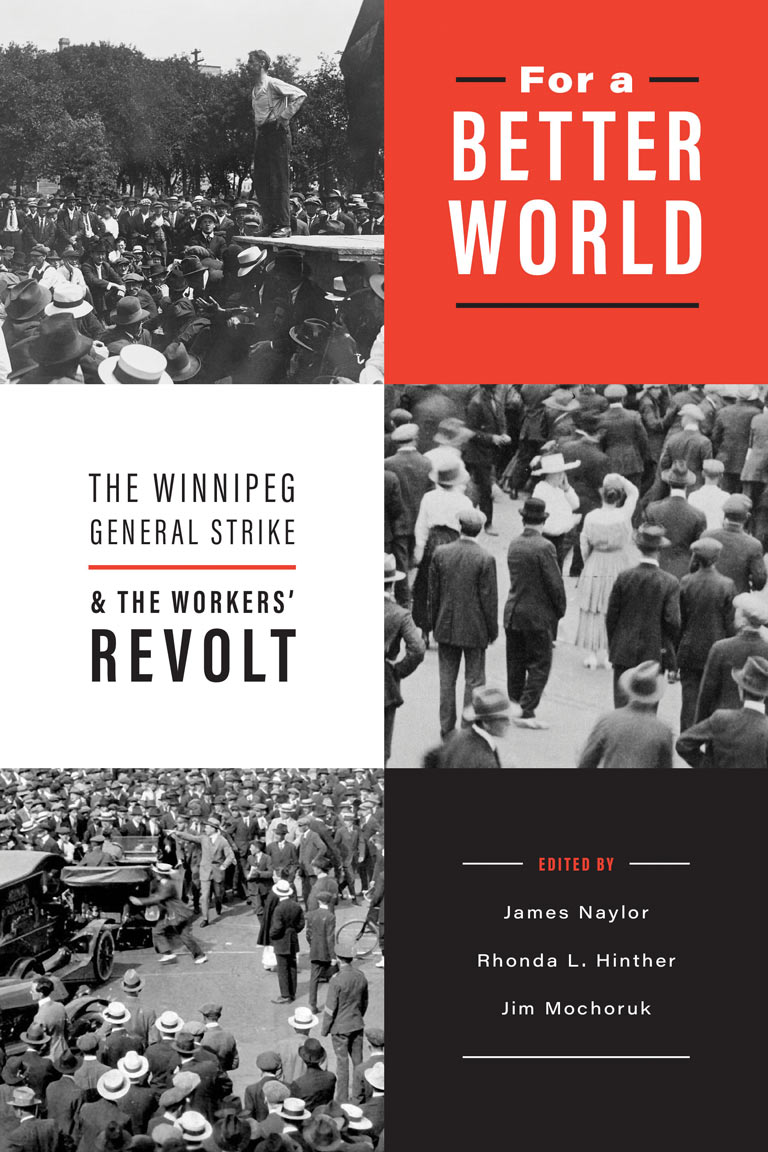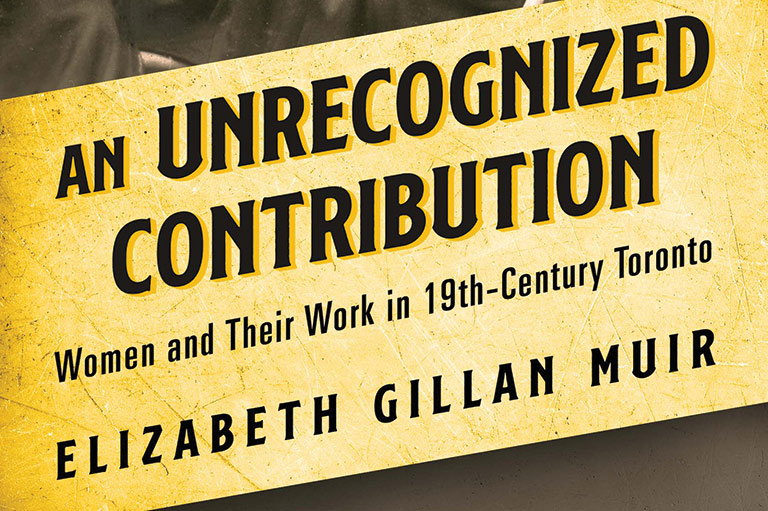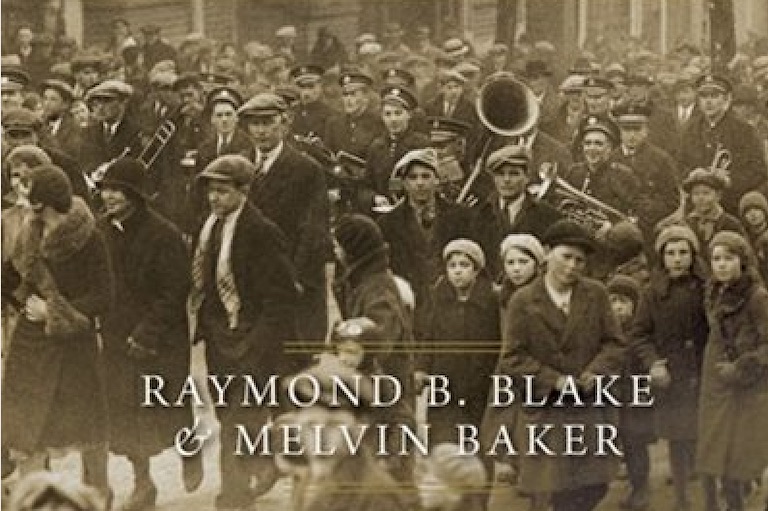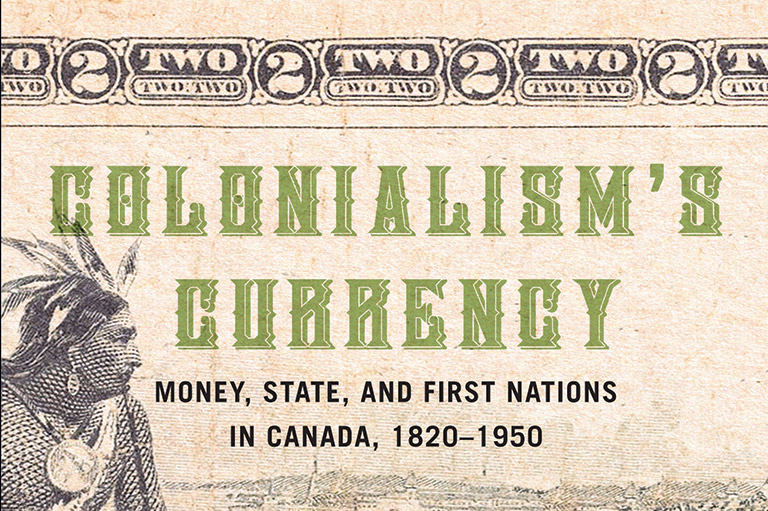For a Better World

For a Better World: The Winnipeg General Strike and the Workers’ Revolt
edited by James Naylor, Rhonda L. Hinther, and Jim Mochoruk
University of Manitoba Press
404 pages, $31.95
While 2019 is remembered for the start of the COVID-19 pandemic in China, it also marked a historic anniversary in Canada: the centenary of the Winnipeg General Strike. The strike was a seminal event in Canada’s social and political development, impacting thousands of people at the time as well as for decades afterwards.
The general strike lasted just over six weeks, effectively shutting down much of the city. It involved workers in the building trades, metal trades, and service industries, as well as municipal staff, and it received support from military veterans and a wide swath of sympathizers. This degree of labour mobilization has never again occurred in Canada, not even during Quebec’s Common Front strikes of 1972.
The latest study of the Winnipeg General Strike is titled For a Better World: The Winnipeg General Strike and the Workers’ Revolt. Both the title and the various essays from different authors make it clear that this is history from a definite point of view. It is an example of “histoire engagée” — meaning history written for a specific purpose.
The volume is based on papers delivered at a centenary conference, held in May 2019, that gathered a who’s who of Canadian left or progressive historians. Together they have gone well beyond a classic narrative approach, digging deeply into contextual analysis. The writers examine factors such as immigrant and British community tensions, evolving views among Great War veterans, emerging women activists, and the impact of military intelligence agents.
The Winnipeg General Strike was resisted by a determined combination of employers and other citizens. The employers were backed by political leaders at three government levels, by local media, and by armed military authorities whose violent interventions led to two deaths, many injuries, and the arrest of numerous labour leaders.
The primary demands of the striking workers were the recognition of union rights and security for union representatives. The social context set a bitter tone, including factors such as widespread urban poverty and postwar insecurity among veterans. The rise of a new generation of labour leaders, who had been schooled in socialist ideals, was essential to galvanizing supporters.
Despite their tenacious solidarity, the unionists were defeated. In fact, labour rights in Winnipeg and elsewhere remained damaged for many years, only resurging during and after the boom times of the Second World War. And yet, in a twist of public memory, the strike is often recalled as a great event in class solidarity, with positive impacts on political and social development.
Today, many aspects of the strike and its aftermath are studied in academic and popular public settings, notably in union education. The Manitoba Federation of Labour stands out for supporting this. Films, theatre productions, and publications such as Canada’s History magazine commemorate individual episodes and individuals.
These varied public initiatives contrast vividly with the situation described by several young historians just fifty years ago, when there had been little discussion of labour history. In 1973, they collaborated on a groundbreaking study titled On Strike: Six Key Labour Struggles in Canada 1919–1949. Its editor, the late and much respected Irving Abella, wrote, with a hint of anger, that “the literature on labour violence and industrial conflict in Canada is almost non-existent.” One essay in that book, by David Bercuson, remains a superbly clear exposition of the Winnipeg General Strike and its context.
The newer book For a Better World is notable for its chapters on other disputes that took place around the same time as Winnipeg’s. Various authors describe events in Seattle, Kansas City, Montreal, and Edmonton, showing strong parallels in grievances and militancy among workers, despite their geographic separation.
The book’s editors also dig in to the classic socialist debate about unionism that’s reflected in the question: Strike or revolution? They argue that we should view the Winnipeg General Strike as more than simply a demand for union rights and recognition, with impacts as well regarding class, ethnicity, and gender. And, with both pride and self-regard, they discuss their own roles as historians, placing themselves at the centre of a radical struggle where history becomes a tool for political change.
This can be worrisome stuff. As we can see in recent school and library conflicts in America, an instrumental approach to the study of history will be used within many ideologies for many differing purposes. History wars can unfortunately have awful consequences.
We hope you’ll help us continue to share fascinating stories about Canada’s past by making a donation to Canada’s History Society today.
We highlight our nation’s diverse past by telling stories that illuminate the people, places, and events that unite us as Canadians, and by making those stories accessible to everyone through our free online content.
We are a registered charity that depends on contributions from readers like you to share inspiring and informative stories with students and citizens of all ages — award-winning stories written by Canada’s top historians, authors, journalists, and history enthusiasts.
Any amount helps, or better yet, start a monthly donation today. Your support makes all the difference. Thank you!
Themes associated with this article
Advertisement
With 7 uniquely curated newsletters to choose from, we have something for everyone.




